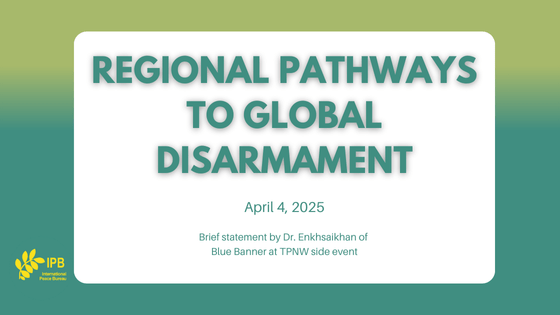(Brief statement by Dr. Enkhsaikhan of Blue Banner at Treaty on the Prohibition of Nuclear Weapons (TNPW) side event, New York, March 6, 2025)
Role of non-nuclear-weapon states (NNWSs) is increasing as a result of the studies undertaken on the effects of nuclear weapons which had lead to the conclusion of the TPNW. The commitments by the NNWSs undertaken by the NPT, NWFZ treaties and the TPNW in principle coincide, enrich and support each other.
Blue Banner, Mongolian NGO, which Dr. Enkhsaikhan‘ represent at this side event, had undertaken a study on the strengths and weaknesses of the NWFZ regime and had concluded that there are at least two dozen non-committed NNWSs (i.e. land-locked, neutral states, NNWSs that are not parties to nuclear military alliances or parties to the current NWFZs that due to current definition and concept of NWFZs cannot be part of the NWFZ regime since they would not be established “based on the arrangements arrived at among the states of the region concerned”. The reasons given by the P5 for their reluctance to accept single-State zones was that doing so might detract from establishing group-state zones, set unfavorable for them precedents and that as a principle the P5 do not provide security assurances to individual states. These are not valid reasons to exclude these non-committed NNWSs from the NWFZ regime and allow for blind spots and grey areas and knowingly establish the Achilles’ heels in the NWFZ regime. Fifty years have passed since the first NWFZ was established. In the meantime space, time and technology have become critical geopolitical factor affecting international security and stability. In the meantime nuclear arms race has intensified while the number of nuclear weapon states has increased to nine.
Check the full statement here:

